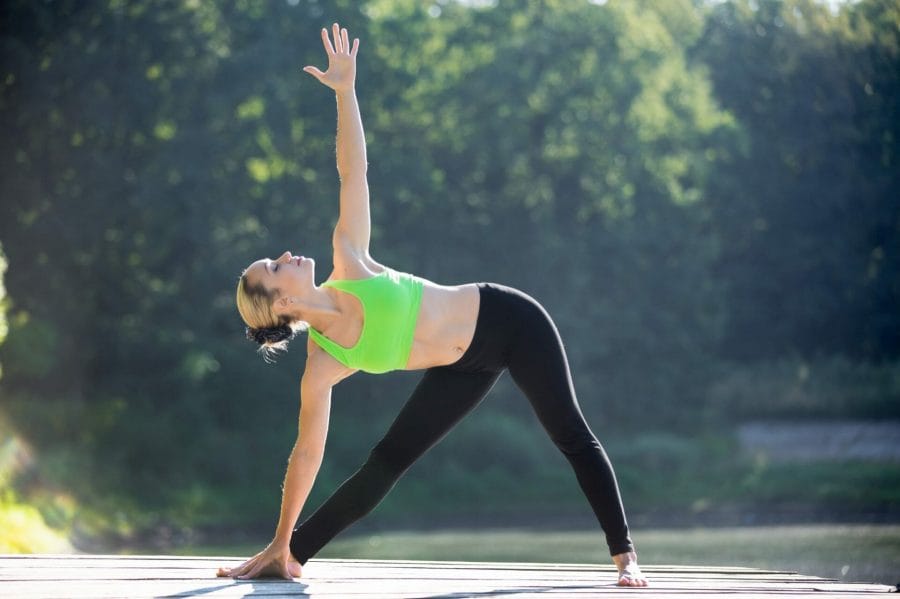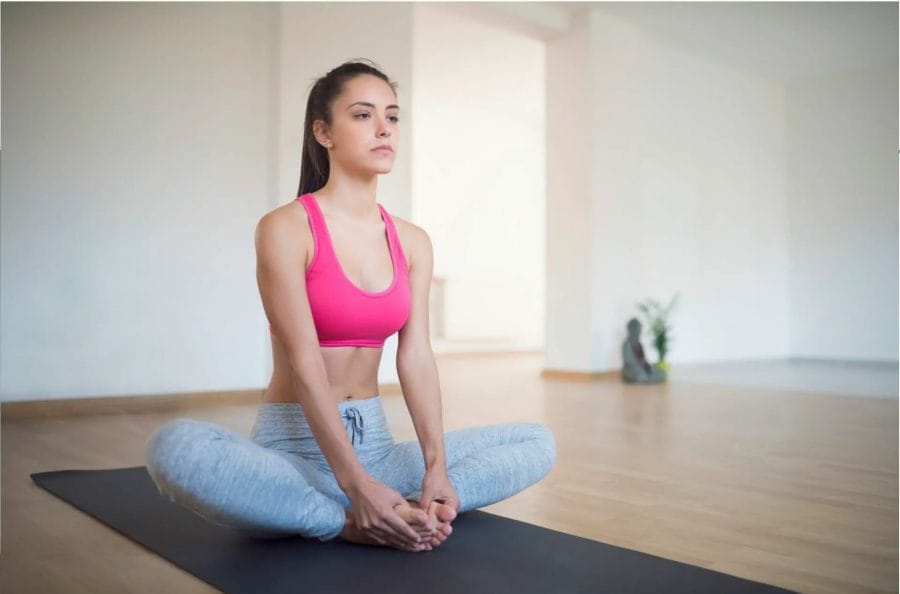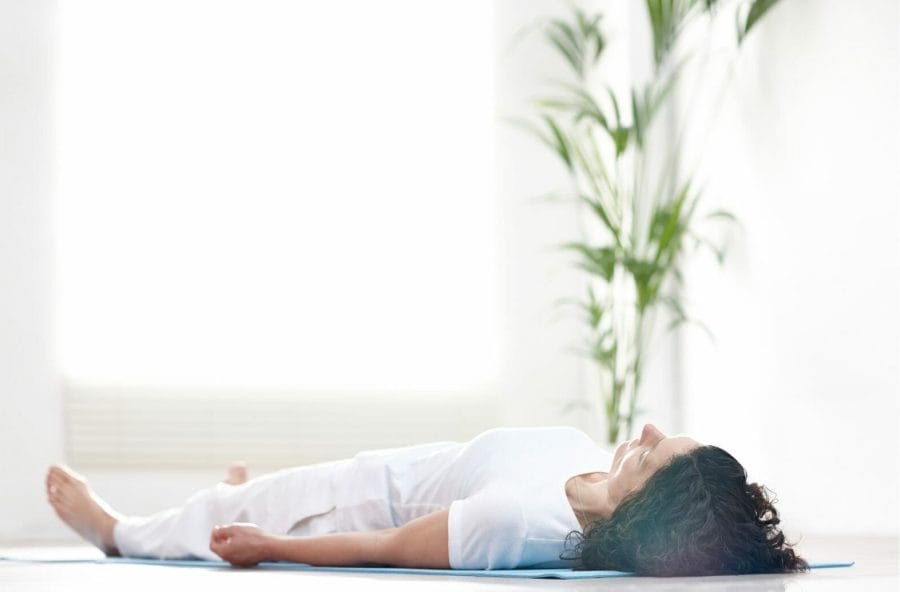Fitness enthusiasts often think of ways to enhance their workout. Whether you are doing cardio, strength training or weight training, you would have wondered if doing yoga would yield better results from your routine. This article answers the question if yoga should be included in your workout and whether it should be done before or after your main workout routine.
A question that is commonly asked is should you add yoga to your routine at all or would it be counterproductive to your workout? And if you include yoga as a part of your workout should it be done before or after workout?
Short Answer to this question is that yoga can be done both before & after a workout. But it depends on the type of yoga asanas. Though a complete yoga session is a workout in itself and should be practised separately from your main exercise routine, you can still practise a few yoga asanas pre and post your workout that would complement your efforts.
Pre-workout yoga asanas help prepare your body for the extensive exercise that is to follow. On the other hand, post-workout yoga asanas help cool down your warmed up body and normalise your heart rate.
However, if you want to do a complete yoga session, that comprises more of holding postures, like Hatha yoga, or is intense like hot yoga, it is best practised separately as it might stretch and tire your muscles which might render your main workout unproductive.
We will dig into this a bit deeper and discuss below the benefits of performing yoga before and after a workout and yoga asanas or poses that can be performed in each case.
Yoga Asanas Before A Workout
While some forms of yoga are a workout in themselves, there are certain yoga poses that complement other workouts. Yoga asanas before a workout help prepare both your mind and body for the exercises that are to follow. It can be seen as oiling the machinery before it is made to do heavy lifting. You can do warm-up yoga asanas even if your workout is not going to be too rigorous.
Benefits of Performing Yoga Before A Workout
- Connects your body and your mind – One of the main benefits of yoga is that it syncs your body and your brain. It increases your awareness about your body viz your breathing, muscle movements, and bones. It also increases your mental strength and therefore brings in more efficiency in your subsequent workout.
- Warms Up your Body – Yoga stretches warm up your muscles and gets your heart pumping, thereby preparing you for your workout ahead. As your body is warmed up, entering into your main workout becomes easier.
- Improves Flexibility – Since yoga asanas that should be performed before a work-out primarily comprise stretches, doing these increase your mobility and bring in more flexibility in your body. This would help you perform your workout exercises more perfectly.
Yoga Asanas That You Can Practice Before a Workout
- Centering Exercise – These include sitting in a comfortable position, closing your eyes and taking in deep breaths. As you inhale feel your breath going in and as you exhale feel it coming out. After 5 deep breaths, chant “Om” three times to calm your mind
- Downward-Facing Dog (Adho Mukha Svanasana) – This is an inversion pose which targets your hamstrings and calves. To perform this asana, come on all your fours on the mat, such that your hands are shoulder width apart and knees directly below tour hips. Then lift your knees and straighten your legs such that you are in an inverted V position.

Source: Canva Stock Photos
- Cat Cow Pose (Chakravakasana) – This pose gives your back a good stretch and helps improve your posture as well. To perform this pose, come on your fours. Now as you inhale, lift up your head and curve your lower back. As you exhale, bring your abdomen in and your head closer to the chest.
- Revolved Triangle Pose (Parivrtta Trikonasana): This is a chest opener exercise and also a good stretch for hamstrings & lower chest. To do this pose, stand straight on the mat with your legs slightly more open than shoulder width apart. Raise your right hand above your head, as you inhale. Exhale and bend towards your left side from your waist. Try to touch your left ankle with your left hand. Keep both legs straight. Repeat on the other side.

Source: Canva Stock Photos
- Butterfly Pose (Baddha Konasana): This is a simple hip opener. To perform the Butterfly Pose, sit on the mat, fold your knees and bring your feet together, closer to your body. While holding your feet, move your knees up and down.

Source: Canva Stock Photos
Yoga Asanas After A Workout
There are certain yoga asanas that can be performed post your workout. This will help relieve tension from the muscles that you would have targeted during your workout and support a faster recovery.
Benefits of Performing Yoga After A Workout
- Helps with muscle recovery – after a rigorous workout session you might feel soreness in your muscles. Performing the correct yoga asanas can help relieve this stiffness and aid muscle recovery.
- Normalises your heart rate – Yoga asanas at the end of your workout help in slowing down your heart rate and bringing it back to your resting phase. It aids your transition into your normal routine.
Yoga Asanas That You Can Practice After a Workout
- Belly Twist (Jathara Parivartanasana) – This is a great pose for stretching your back and spine. To perform this asana, lie down straight on the mat with your arms on the side, in a T-position. Pull your knees close to your chest and then turn your torso towards your right side while looking at the left side. Now repeat this on the other side.
- Thread the needle (Urdhva Mukha Pasasana) – This asana helps open your shoulder, lower back, middle back and neck and releases tension in these areas. Start by coming on your fours on the mat. Slide your right arm from under your left arm. As you do this, bring your right shoulder all the way to the mat, while resting your right cheek and ear on the mat. Repeat this on the other side, by sliding your left arm under the right arm.
- Pigeon pose (Eka Pada Rajakapotasana) – This is a hip opener that helps stretch your thighs, groin and back. In order to get into this position, start by being in the downward dog position. Then raise your right leg up in the air and bring your right foot close to the left hand, with your right knee resting on the mat. You can stay in position or further deepen the stretch by folding your arm the mat and lying with your head down. Repeat this on the other side. You can watch this video for a better understanding on how to perform this asana.

Source: Canva Stock Photos
- Child’s Pose (Balasana) – This is a great resting position and as a part of your cool down routine, it should be performed towards the end. To perform this, rest your hands and knees on the mat. Your knees should be slightly wider than shoulder width and arms completely stretched out. Rest your belly on your thighs and stay in this position as you breathe in and out.

Source: Canva Stock Photos
- Savasana – This is the ultimate resting position. You would have heard that one should not underestimate the power of this pose and rightly so! This simple posture has immense benefits starting from relaxing your mind to helping you with fatigue and insomnia. Once you are done with your entire workout and cool down routine, you can end your session with Savanna. To enter into Savasana, lie down flat on the mat. Take deep breaths. Start relaxing your entire body as you focus your mind on your body starting from your head to your toe.

Source: Canva Stock Photos
You can also perform the cat-cow pose and downward dog pose as a cool down exercise. The benefits of these postures and how to perform them have been explained in the previous section.
Yoga as a Workout in itself
Various forms of yoga are so intense that they can be a workout in themselves. Say an hour long of traditional yoga sessions like Hatha yoga or Vinayasa yoga or more modern forms of yoga like Sculpt Yoga, Hot yoga or DDP yoga will burn enough calories for a complete session.
Hence, doing a complete yoga session with your workout might even turn out to be counterproductive as it might tire you out and over stretch your muscles.
Ideally, a full yoga session would yield best results if done separately. However, if you want to do a complete yoga session with your workout, it should be done after your workout rather than before. This way you will not tire out your muscles and would be able to give 100% to your exercise routine.
Even if you plan to do a full yoga session after your workout, you can start your main workout with light yoga postures and stretches mentioned above, for warming up your body.
Frequently Asked Questions
Should I do Yoga Before or After Strength Training?
If you plan to do a complete yoga session it is best to do it after your strength training session, especiallyif your goal is to build muscular strength. This way you will have enough energy for your challenging workout and you will not tire yourself out before your workout begins. Also, you’ll be able to bettee relax the muscles strained during your strength training session.
If your goal however is to increase flexibility and open up your body, you could take up a pre-workout yoga session as well.
Should I do Yoga Before or After Running?
In case of running, a complete yoga session before your run will help your body get ready for the grind. It would provide you the necessary stretch and will open up your body which would reduce the chances of an injury. You can also do light cool down yoga stretches like downward-facing dog, pigeon pose and low lunge after your run to release tension from your muscles.
Wrap Up
For any fitness enthusiast, yoga can act as a great way to further enhance your workout. There are some yoga asanas that you can perform before and after your workout.
However, you should be careful to perform only the relevant yoga asanas and for a stipulated period of time (ideally 10 minutes only). You should ensure that the asanas are well timed within your main workout and you are not over-doing it.
While yoga asanas can complement a workout, yoga in itself is also a complete workout. Only if you are a seasoned practitioner should you perform a complete yoga session with your main workout. Otherwise you might end up over-tiring your muscles and instead of gaining from your main workout, you would end up straining your body.
